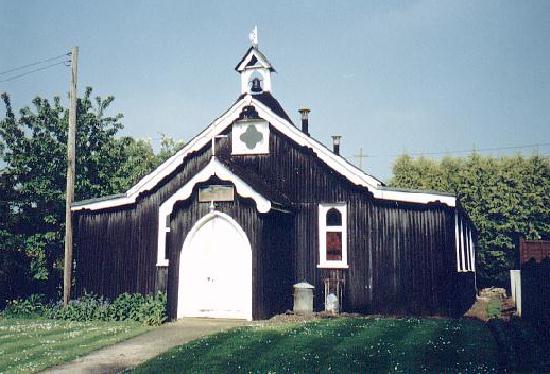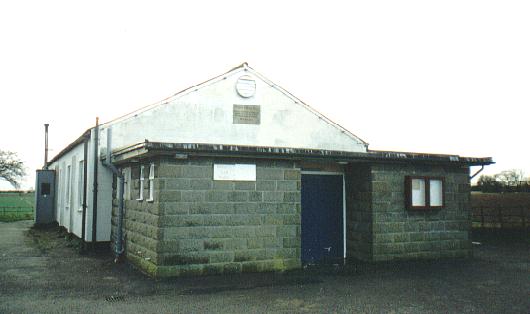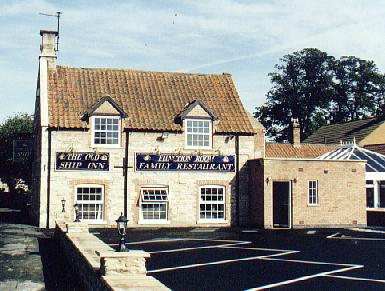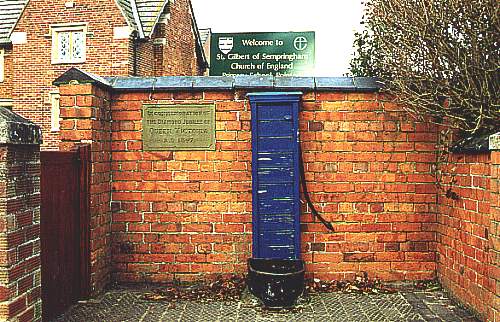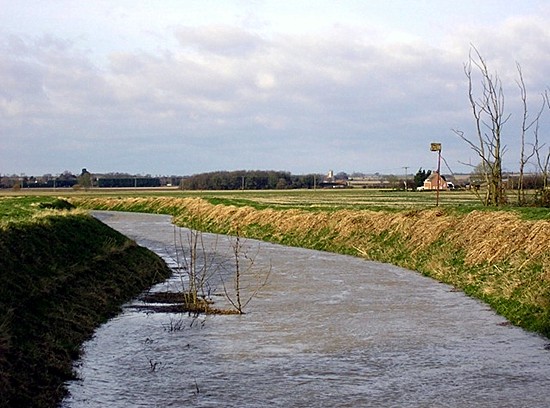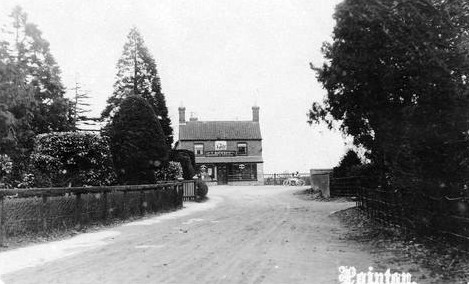|
Pointon
The Domesday Book of 1086 refers to Pointon as
Pochinton or "the farmstead associated with or called after Pohhr", from the Old English. The village is seven miles north of Bourne on the B1177 and although overshadowed in historical interest by its illustrious neighbour, Sempringham, there is much to attract the curious. Some of the old thick-walled houses hereabouts are reputed to have been built with stone from the priory at Sempringham and there must have been some grand houses in past times because water from the Car Dyke, the Roman waterway that runs past the village to the east, was once used to fill a mediaeval moat around one of them. The Mormons, the Church of Jesus Christ of Letter-Day Saints, also had a preaching house in the village and on Religious Census Sunday in 1851, 78 people attended the chapel and 35 the preaching house but others from the village walked across the fields to attend services at St Andrew's Church at Sempringham. Christ Church, pictured above, is a recent addition to the village, having been erected in 1893, and is one of England's few remaining tin tabernacles, tucked away in a side lane yet still serving the community as a place for worship after more than a century although its construction was an early form of prefabrication, made elsewhere from corrugated iron and erected on site for less than £400.
The church was still going strong in the spring of 2014 with a full
programme of worship and it was also open for community activities every
Tuesday morning, regularly attracting twenty villagers and there were also
evening drop-ins and school assemblies.
The
hall had not been built when the Second World War (1939-1945) broke out
and the land was used for an air raid shelter and later as a garden and
poultry run as a source of food for the villagers. But nine years after
the war ended, the hall did become a reality and a plaque over the door records
the event: "The hall was built by voluntary labour upon the site given by Mr. Thomas Bates of Pointon. Erected 1954." The
hall cost £1,300 to build, money that was donated by villagers in sums of
£20, £10 and £5, but modernisation work has been carried out in recent years at a cost of £17,000.
There have been difficulties with running the hall, particularly in 1999
when there was a shortage of volunteers, but these problems have been resolved and so the hall continues to function as a valuable amenity and the
focal point for village life with dances, wedding receptions and parties
being held there.
The only public house in Pointon is the Old Ship, although from 1998 until 2000, it was called the Olde Tavern, a white-washed building with twin dormer windows and a red
pantiled roof. The Old Ship is the original name and was restored when new owners took over and gave the building a major facelift that included removing the whitewash and revealing a façade of mellowed brick. Immediately opposite was another inn called the New Ship but this has been closed for several years and is now converted for use as a private house. The age of the Old Ship is not known and although the deeds only go back as far as 1921, it is certainly much older, perhaps even 18th century. It is listed as the Old Ship in White's Lincolnshire for 1856 when the victualler is named as William Hackett while the New Ship across the road is also mentioned with butcher and victualler William Shilcock as the landlord and he may well have been related to the Shilcock family of Bourne who owned the Star Brewery in the town that supplied many public houses in the vicinity with their ale.
The village school was built in 1863 at a cost of £500 that was raised by public subscription and had room for 150 children although the average attendance was only 84. It was known as the National School and was maintained with an annual donation of £25 from the Crown, a government grant, a voluntary rate and fees that were paid in certain cases. The school was particularly important to village life because it also contained a parochial library of 180 books. The headmaster at this time was Mr William Hornby and his wife Emma was the mistress. It is now known as St. Gilbert of Sempringham Church of England Primary School and has a stone plaque on the end gable bearing that date. At the front of the building is the village pump, installed in commemoration of the Diamond Jubilee of Queen Victoria A D 1897. The school was improved and extended with the addition of a new block in the spring of 2003 at a cost of £140,00, funded jointly by the Church of England and the Department for Education and Science, and the Bishop of Grantham, the Rt Rev David Rossdale, dedicated the building at the opening ceremony. The work included the addition of a new computer suite.
REVISED APRIL 2014 See also Tin Tabernacles Draining Bourne North Fen
Go to: Main Index Villages Index |
|||||||||||||||||
